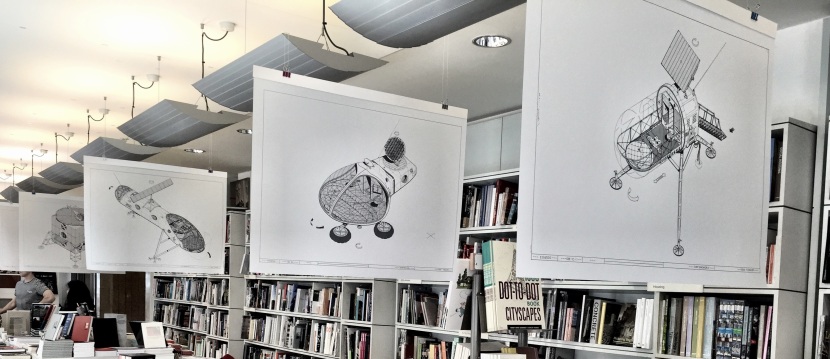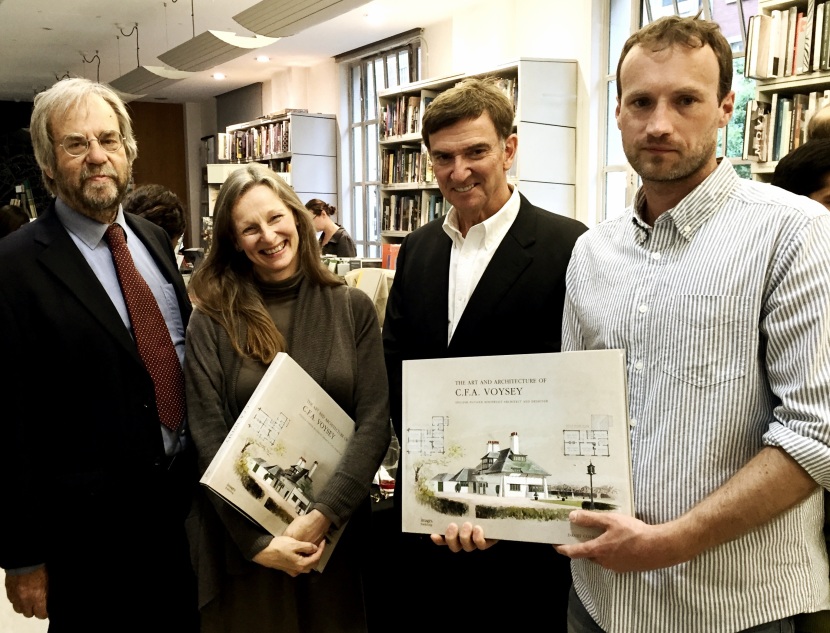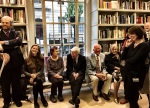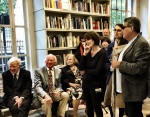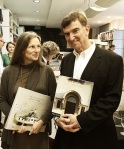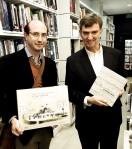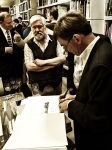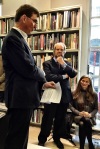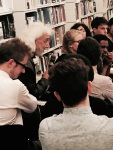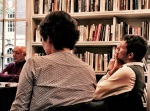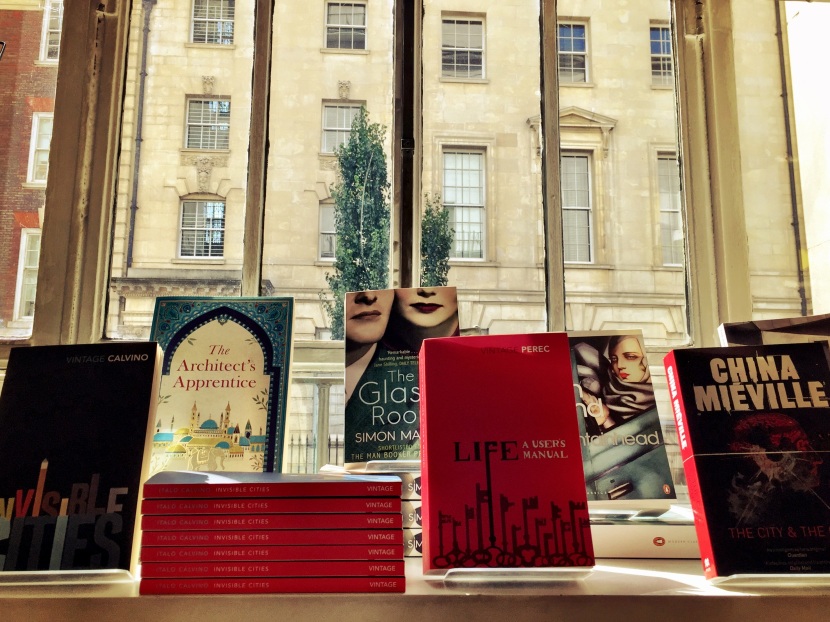
…or a respite from that JCT
Quite often an architect will approach the bookshop till with an armful of books about contractual procedures and CDM regulations and a look of resignation. Placing the books on the counter with a heavy thud and a nostalgic smile, we’ll hear the now familiar phrase “I’m only buying boring books today, I’m afraid”.
Beyond the maze of planning applications, endless varieties of contract administration forms and keeping up with the latest change in Building Regulation Part L, exists a world of architecture fiction that explores ideas, philosophies, dreams and fears that lurk behind the facades of buildings. These are some of the books that spur our imaginations, and set us free to explore the often ignored psychological depths of the empty space between four walls, the symbolic meaning of a glass façade, or the power struggles inside an imposing concrete structure.
We’ve put together a fiction list of books written by architects, about architects, or where the architecture becomes a central character of the story, that we hope will persuade you to treat yourself to a “non-boring” book next time you find yourself browsing through our building contract shelf.
 Lesabéndio: An Asteroid Novel is an intergalactic utopian fable that takes place in Pallas, an asteroid where its worm-like shaped inhabitants enjoy a quiet, orderly life, dedicating their time to artistic pursuits and redesigning the asteroid’s interiors into extraordinary architectural patterns, infused with music and lighting. The sensory contemplative existence of the Palladian creatures gets interrupted when visionary engineer Lesabéndio hatches a plan to build a 44 mile high tower to join the two sides of the double asteroid.
Lesabéndio: An Asteroid Novel is an intergalactic utopian fable that takes place in Pallas, an asteroid where its worm-like shaped inhabitants enjoy a quiet, orderly life, dedicating their time to artistic pursuits and redesigning the asteroid’s interiors into extraordinary architectural patterns, infused with music and lighting. The sensory contemplative existence of the Palladian creatures gets interrupted when visionary engineer Lesabéndio hatches a plan to build a 44 mile high tower to join the two sides of the double asteroid.
Paul Scheerbart was a writer and visionary proponent of glass architecture, whose architectural fables were admired by architects Bruno Taut, Walter Gropius, and Hans Scharoun, as well as by influential thinkers such as Walter Benjamin and Gerschom Scholem. After the now out of print The Grey Cloth: A Novel on Glass Architecture, Lesabéndio is Scheerbart’s most widely acclaimed work.
 Number two on our list is The Care of Wooden Floors by Will Wiles. It tells the story of a friendship between Oskar, a minimalist music composer best known for his “Variations on Train Timetables”, and an old university friend, whose name we never get to find out. When Oskar has to travel to America to finalise his divorce proceedings, he leaves the care of his flat and his two cats in the hands of his trusted friend. Although Oskar remains absent from the story throughout the book, we get to know him intimately through descriptions of his apartment, and the carefully composed notes with care instructions left around his home. As we read his friend’s narration over the next eight days, we gradually start to learn about Oskar’s neurotic obsession with perfection and neatness. As the days pass, a series of comic domestic accidents snowball into a chain of catastrophes that threaten to dismantle Oskar’s friendship, while the rest of his life falls apart elsewhere.
Number two on our list is The Care of Wooden Floors by Will Wiles. It tells the story of a friendship between Oskar, a minimalist music composer best known for his “Variations on Train Timetables”, and an old university friend, whose name we never get to find out. When Oskar has to travel to America to finalise his divorce proceedings, he leaves the care of his flat and his two cats in the hands of his trusted friend. Although Oskar remains absent from the story throughout the book, we get to know him intimately through descriptions of his apartment, and the carefully composed notes with care instructions left around his home. As we read his friend’s narration over the next eight days, we gradually start to learn about Oskar’s neurotic obsession with perfection and neatness. As the days pass, a series of comic domestic accidents snowball into a chain of catastrophes that threaten to dismantle Oskar’s friendship, while the rest of his life falls apart elsewhere.
 The City and the City by China Miéville is a classic detective noir thriller that takes place in a familiar and simultaneously surreal setting. Inspector Tyador Borlú of the Extreme Crime Squad police unit of Beszel is called to investigate the murder of a woman. The city’s most unusual characteristic is that it shares the same topographical space as the city of UI Qoma. Although the citizens of both cities converge every day routinely, it is against the law to acknowledge each other’s existence. If a citizen accidentally makes contact with someone from the other city, he has to learn to “unsee” them to avoid punishment. As Inspector Borlú delves deeper into his police investigation, he’ll find himself having to cross the perilous physical and psychic boundaries of these two cultures separated by a shared space.
The City and the City by China Miéville is a classic detective noir thriller that takes place in a familiar and simultaneously surreal setting. Inspector Tyador Borlú of the Extreme Crime Squad police unit of Beszel is called to investigate the murder of a woman. The city’s most unusual characteristic is that it shares the same topographical space as the city of UI Qoma. Although the citizens of both cities converge every day routinely, it is against the law to acknowledge each other’s existence. If a citizen accidentally makes contact with someone from the other city, he has to learn to “unsee” them to avoid punishment. As Inspector Borlú delves deeper into his police investigation, he’ll find himself having to cross the perilous physical and psychic boundaries of these two cultures separated by a shared space.
 J.G. Ballard’s classic High Rise takes us into the belly of a respectable city tower block where minor disputes amongst the residents start escalating until they reach disproportionate heights. Civility and social order gradually degenerate into savagery when neighbours start organising themselves into several rival camps, and life in the tower block regresses into a ‘Lord of the Flies’ type of society. One of the central characters of the story is the building’s architect Anthony Royal who, believing in the power of architecture to organise and shape societies, tries unsuccessfully to rule the tower block from his penthouse apartment. This is one of Ballard’s most chilling and uncomfortable dystopias that uses architecture as a metaphor of how we construct societies, and how fragile those social structures are.
J.G. Ballard’s classic High Rise takes us into the belly of a respectable city tower block where minor disputes amongst the residents start escalating until they reach disproportionate heights. Civility and social order gradually degenerate into savagery when neighbours start organising themselves into several rival camps, and life in the tower block regresses into a ‘Lord of the Flies’ type of society. One of the central characters of the story is the building’s architect Anthony Royal who, believing in the power of architecture to organise and shape societies, tries unsuccessfully to rule the tower block from his penthouse apartment. This is one of Ballard’s most chilling and uncomfortable dystopias that uses architecture as a metaphor of how we construct societies, and how fragile those social structures are.
 From the hand of the master of metaphysical horror, number five on our list is H.P. Lovecraft’s The Dreams in the Witch House. In this short story we meet mathematics student Walter Gilman. When he moves into an attic room of unusual and nearly physically impossible geometrical characteristics, Gilman becomes increasingly bewitched by the possibility of travelling to other dimensions with the help of structures of particular spatial proportions.
From the hand of the master of metaphysical horror, number five on our list is H.P. Lovecraft’s The Dreams in the Witch House. In this short story we meet mathematics student Walter Gilman. When he moves into an attic room of unusual and nearly physically impossible geometrical characteristics, Gilman becomes increasingly bewitched by the possibility of travelling to other dimensions with the help of structures of particular spatial proportions.
The Dreams in the Witch House is one of the finest examples of the use of architectural spaces to create unearthly worlds and disturbing psychological perceptions of unreality.
Next Friday we’ll publish the five remaining titles on our architecture in fiction list. Since we know that most of you have come across it countless times already, Ayn Rand’s The Fountainhead won’t be on it. If you’d like to find out how our selection ends, keep an eye on our blog. In the meantime, if we’ve succeeded in stirring your curiosity, you can find all of today’s list in our shop at 66 Portland Place and also on our website.


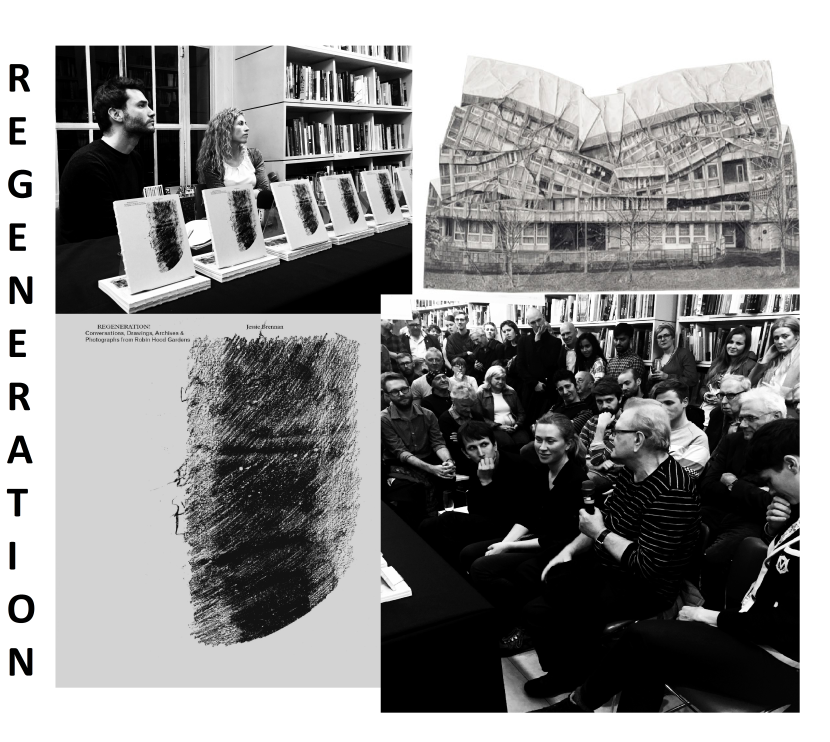




 Life: A User’s Manual was first published 1978 and soon became Georges Perec’s best known literary work, giving him international acclaim. With the help of a jigsaw puzzle and a well known chess problem known as the knight’s tour, a sequence where the knight is required to visit every square of the chess board only once, Perec used a 10 storey apartment building at the fictional Parisian address, 11 Rue Simon-Crubellier, as the setting to weave together 99 seemingly disconnected life stories.
Life: A User’s Manual was first published 1978 and soon became Georges Perec’s best known literary work, giving him international acclaim. With the help of a jigsaw puzzle and a well known chess problem known as the knight’s tour, a sequence where the knight is required to visit every square of the chess board only once, Perec used a 10 storey apartment building at the fictional Parisian address, 11 Rue Simon-Crubellier, as the setting to weave together 99 seemingly disconnected life stories. Charles Belfoure is an American architect, writer and historian who takes us into the city of Paris during World War II with his latest novel. In The Paris Architect we meet Lucien Bernard, an amoral individual trying to live through the German occupation unnoticed by turning a blind eye to the atrocities committed by the German soldiers against the Jews. When the architect finds himself short of money, he faces the dilemma of whether to accept a generously paid, but also the most challenging and dangerous design job of his career. A wealthy Jewish man wants to commission Bernard to retrofit buildings with hiding places, where persecuted families won’t be found by Nazi soldiers.
Charles Belfoure is an American architect, writer and historian who takes us into the city of Paris during World War II with his latest novel. In The Paris Architect we meet Lucien Bernard, an amoral individual trying to live through the German occupation unnoticed by turning a blind eye to the atrocities committed by the German soldiers against the Jews. When the architect finds himself short of money, he faces the dilemma of whether to accept a generously paid, but also the most challenging and dangerous design job of his career. A wealthy Jewish man wants to commission Bernard to retrofit buildings with hiding places, where persecuted families won’t be found by Nazi soldiers.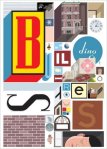


 Lesabéndio: An Asteroid Novel
Lesabéndio: An Asteroid Novel 



